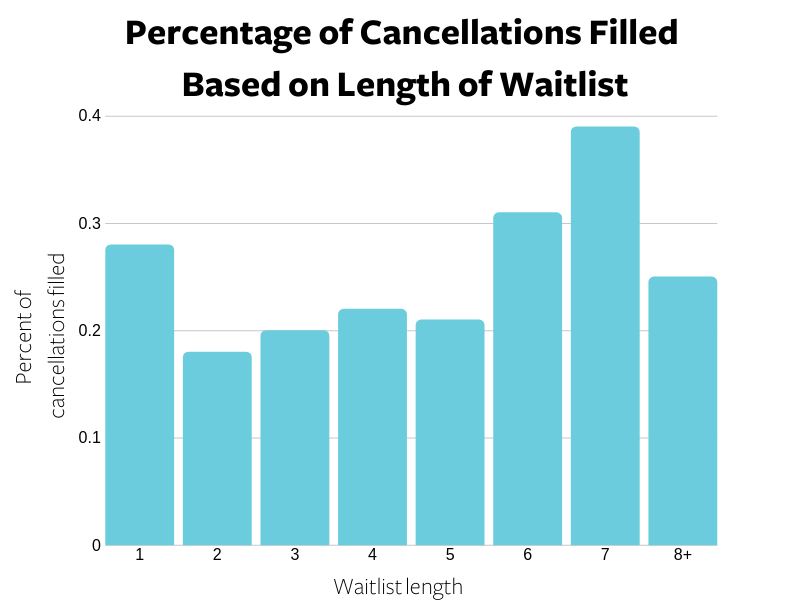In this 3-part series, we’re sharing the top best practices for managing your waitlist and filling appointment cancellations. Check out part two and part three.
Appointment cancellations are a huge nuisance for practices, and they have negative repercussions for everyone involved. They lead to long wait times for patients, cause unexpected downtime for clinics, consume valuable time for clinic staff who have to try to fill them, and cause frustration with patient compliance for providers. Cancellations lead to long waitlists that often take up too much staff time. Finding practices that help reduce cancellations will help you with better managing your waitlist, saving time, and creating a better patient experience.

Healthcare professionals, we want to hear from you. If you work in healthcare, click this link, take our 10-minute survey, and get entered in our giveaway for a $100 Visa gift card.
Not surprisingly, the most important factor in filling a cancelled appointment is the number of patients you contact. The more patients you contact, the greater the chance of filling the appointment. This makes logical sense, but there is a magic number practices should aim for in order to see the maximum fill rate.
According to our data, the optimal number is 7 patients. When 7 patients are contacted, we see our highest fill rate of nearly 40%.

Interestingly, contacting 1 patient results in a relatively higher fill rate than when contacting between 2-5 patients. This may seem surprising, but we’ve found that most of our practices who experience these results are practices who know their patients well and are able to offer new openings to the right patient; therefore, it only takes one try.
However, for the majority of practices, persistence pays off. Our data shows that we had one offer go out to 54 patients whose preferences matched the new appointment. The 44th patient who was contacted accepted the appointment. Persistence is key and automation allows you to do it faster and with better results.

We support 3 forms of communication: email, voice, and text messaging (SMS). We prioritize communication over text messaging as it has the best response rate and shortest time to get a response from patients. Here is how our data breaks down when looking at all patients who have accepted an appointment offer. It’s obvious that text messaging results in the highest rate of response and appointment confirmation.
Text messaging is the preferred method of communication for patients across the board. We’ve seen the data over and over again for our clients. It’s important to keep in mind that you should be communicating with your patients when and how they want to be communicated with. For now, that means text messaging.
If you’re ready to use text messaging, automate your wait list and save more time, contact Luma Health today! We offer automated waitlists, cancellation management, appointment confirmation texts, referral management, patient recall, and more.
Looking for more best practices for managing your waitlist? Check out part two and part three.
Tashfeen Ekram, MD, is a radiologist, self-taught coder, healthcare innovator and Co-Founder of Luma Health. Contact him on Twitter at @tashfeenekramMD.








